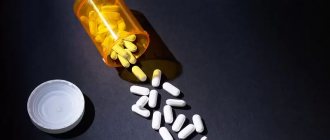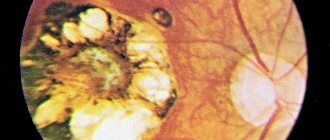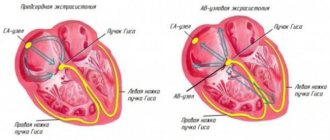- General data History
- Methods of use
- Physical signs
- First stage
- Signs
- Drug therapy
Attention!
Drug use causes irreparable harm to health and poses a danger to life!
Codeine is a medicinal substance that is included in many cough medications with an analgesic effect. It is an opium alkaloid, which has a weak narcotic effect, therefore it is often used by drug addicts to make drugs in a homemade way. The use of codeine for recreational purposes leads to the formation of drug addiction, poisoning of the body, overdose, which, if left untreated, leads to death.
Total information
Sleepy poppy is a source of codeine, which is obtained semi-synthetically from morphine. The substance is classified as an opiate. Its action resembles morphine, but has a less pronounced analgesic and narcotic effect. Codeine is actively used in pharmacology due to its ability to inhibit the cough center and reduce pain. The substance is included in tablets, cough syrups, and painkillers. In pharmacology, it is most often used in combination with ibuprofen or paracetamol.
In moderate dosages, it does not cause harm to the body, but with increasing doses, as well as uncontrolled use, codeine damages nerve endings and disrupts the functioning of the liver, kidneys, heart muscle and blood vessels.
Codeine gained its greatest popularity as a component of medications when desomorphine appeared on the drug market, where codeine became the main active ingredient with a narcotic effect.
Story
Codeine as a drug was synthesized in the early 19th century. In Russia, Bekhterev's cough medicine was made based on the opiate. Codeine preparations were also popular in other countries. However, drugs with opiates were used not only for medical purposes, but also for recreational purposes - they were added to alcoholic drinks. The high popularity, as well as the uncontrolled use of codeine and its combination with alcohol, caused many side effects, including drug addiction.
Later, drug addicts in makeshift conditions began to produce a dangerous drug based on codeine - desomorphine, which in the slang of drug addicts is better known as krokodil.
In 2012, Russia introduced a ban on the over-the-counter sale of drugs containing codeine.
Methods of use
The popularity of codeine is due to its low price, as well as the ability to purchase it at any pharmacy. The opiate has a weak narcotic effect, so it is rarely used in its pure form as part of medications. Most often, tablets and syrups are mixed with alcoholic drinks and then taken orally.
For a more pronounced narcotic effect, codeine-based drugs are prepared for intramuscular or intravenous administration. This method of use not only allows you to become intoxicated a few minutes after the infusion, but also causes addiction faster.
Pathological attraction to an opiate leads to a gradual decrease in its intoxicating effect, so drug addicts begin to produce a harder drug - desomorphine or begin to use other heavier substances.
With intravenous administration, dependence is formed within a month, and with the addition of chemical impurities after the first two or three doses. The consequences of opiate abuse include dysfunction of internal organs, blood clots, pulmonary edema, infection, and death.
Composition and action
The dosage form of the substance is tablets, injection solution, capsules. The powder dissolves well in water. Depending on the form of release, it is taken orally, intravenously, intramuscularly and rectally. Transformation occurs through the liver, excretion through the kidneys.
Pentobarbital sodium is a CNS depressant. The drug acts on nerve endings and blocks the ability to receive and transmit signals. In addition, the active substance affects the enhancement of GABA receptors (inhibitory neurotransmitter). The medicine can cause drowsiness, lethargy, and lethargy, as it has a negative effect on the cerebral cortex.
Features of the effect on the body
The effect of codeine on the body is due to its influence on opiate receptors in the brain by stimulating the antinociceptive system. During metabolism, the substance is converted into morphine, which leads to inhibition of brain receptors, increased synthesis of adrenaline, dopamine, serotonin, which helps improve mood and general well-being.
Physical signs
After use, codeine anesthetizes, inhibits the cough and respiratory centers, and inhibits the activity of the digestive tract. However, when taken uncontrolled for a long time, codeine:
- disrupts metabolism;
- depresses cardiac and respiratory activity;
- causes arrhythmia, ischemic disease;
- reduces liver activity;
- slows down intestinal motility;
- interferes with urination;
- inhibits thermoregulation;
- reduces blood pressure, body temperature;
- provokes muscle rigidity;
- constricts the pupils.
Mental symptoms
By disrupting the transmission of nerve impulses, when abused, codeine causes:
- twilight clouding of consciousness;
- disorientation in space;
- memory loss;
- emotional instability - good mood, friendliness gives way to aggression, apathy;
- delusional thoughts;
- psychosis;
- persecution mania;
- panic attacks.
Content:
- What is butyrate
- How drug addicts use the composition
- Side effects or consequences of using butyrate
- Butyrate overdose
- Dangerous consequences for the body when taking butyrate
- Butyrate + alcohol = death
- How to Avoid the Negative Health Effects of Butyrate
Butyrate or sodium hydroxybutyrate is a salt of gamma-hydroxybutyric acid (GHB).
The drug is a central nervous system depressant and, when used in low doses, has a calming effect on the human body. Drug addicts use the drug as a stimulant
, inhibiting normal mental activity. The resulting effects resemble those that occur after drinking alcohol or ecstasy.
How addiction is formed
As the dosage increases, the frequency of use, and the combination of codeine with other narcotic substances and alcohol, a gradual increase in tolerance occurs. The body's protective properties weaken, and to obtain drug intoxication, an increase in dosage is required, and withdrawal syndrome occurs.
First stage
At the first stage, codeine addiction is characterized by the following symptoms:
- thoughts only about the drug;
- deterioration in sleep quality;
- fading of mental and physical signs of codeine intoxication;
- deterioration or complete loss of appetite;
- the appearance of irritability, skin itching.
Psychological discomfort, a depressed emotional state in the absence of the drug in the blood forces a person to take a new dose of codeine to restore the psycho-emotional state. At this stage, the opiate user does not recognize his addiction.
Second stage
At the second stage of the formation of addictive behavior, the frequency of administration and dose increases - tolerance increases. Mental signs of addiction are accompanied by physical symptoms. This stage is characterized by the appearance of a protective reaction to the administration of the drug - itching, nausea, vomiting. Some functions of the body are gradually restored, at the same time the narcotic effect is reduced, and intoxication becomes much shorter. The addict continues to deny his addiction.
The effect of morphine, a metabolite of codeine, on the nervous system is reduced, which leads the drug addict to the need to regularly increase the dose. When the drug is partially removed from the body, a person experiences physical impotence and emotional instability.
Third stage
The third and final stage of somatic dependence is when the mental and physical symptoms of addiction intensify, and codeine metabolites become part of the metabolism. The drug addict feels comfortable only during codeine intoxication. Opiate use is becoming more frequent and is often combined with alcoholic beverages or other psychoactive substances. Often, to enhance the narcotic effect, codeine is combined with toxic and chemical components.
At this stage, missing a dose is accompanied by a pronounced withdrawal syndrome, and the functions of the internal organs are depressed - multiple organ failure develops.
How long do codeine addicts live?
The life expectancy of codeine addicts depends on their general health, dosage, regularity of taking the opiate, as well as its combination with other psychoactive substances.
The average life expectancy of a codeine addict is 3-7 years, but most do not live more than 5 years. The cause of death most often is not dysfunction of internal organs, which is formed under the influence of the drug, but an overdose or secondary infection, against which sepsis develops.
Detoxification
3 000 ₽
Calling a narcologist to your home
3 000 ₽
Literature:
- Sodium hydroxybutyrate: Neuropharmacological and clinical research / Ed. valid member USSR Academy of Medical Sciences V. V. Zakusova. - Moscow: Medicine, 1968. - 135 p.
- Drug complications and ways to eliminate them: handbook. for doctors / I. B. Mikhailov, I. V. Markova. - M.; St. Petersburg : DILYA, 2004. – 329 p.
- Drugs: properties, action, pharmacokinetics, metabolism: textbook / N. V. Veselovskaya - 3rd ed., revised, corrected. and additional - Moscow: Narkonet, 2008. - 262 p.
Need some advice?
OR CALL A DOCTOR
CALL!
+7
Consequences
Chronic codeine abuse does not go away without leaving a trace. Even with timely diagnosis and proper treatment, the drug disrupts the functioning of internal organs and provokes diseases that are difficult to correct. Long-term use of opiates leads to the development of the following disorders:
- allergies with swelling, redness of the face, nausea, vomiting, less often Quincke's edema;
- depression of the cardiovascular system, decreased heart rate, surges in blood pressure;
- acute heart failure;
- pathologies of the digestive tract, intestinal obstruction;
- muscle rigidity, tremor;
- respiratory failure;
- decreased libido, potency, reproductive dysfunction;
- exacerbation of existing chronic diseases;
- renal and liver failure;
- formation of trophic ulcers at the injection site;
- secondary infection, sepsis;
- formation of schizophrenia-like states;
- hallucinations, persecution mania;
- toxic encephalopathy.
Signs of a drug addict
At the first stage of addiction formation, it is extremely difficult to recognize the problem, since no serious changes occur in the body of a novice drug addict. An alarming signal can be codeine withdrawal, which relatives of the drug addict confuse with alcohol withdrawal, so the problem often remains unsolved and continues to grow.
Relatives and friends of the addict begin to sound the alarm when the signs of drug intoxication become more pronounced, and drug withdrawal is accompanied by more pronounced symptoms. You can recognize a codeine addict while intoxicated by the following signs:
- a good mood;
- calm;
- loss of orientation in space and time;
- constriction of the pupils;
- slowing of respiratory and cardiac function;
- drowsiness, which increases as the drug is removed from the body.
After a drug addict awakens from a troubled sleep, withdrawal occurs, which is accompanied by symptoms of varying severity.
Use of pentobarbital by drug addicts
In narcology, the name of this drug is well known. People seeking euphoria and new sensations often turn to pharmaceutical drugs for these purposes. If you use sodium pentobarbital in an increased, but not lethal, dosage, you can achieve the desired effect - drug intoxication. A person relaxes physically and mentally, feels confident, omnipotent, enlightened, all problems fade into the background, the world around becomes brighter, colorful hallucinations arise.
Withdrawal syndrome
Treatment of codeine addiction is not only dangerous for the health and life of the drug addict, but is also fraught with constant breakdowns, as it is complicated by withdrawal syndrome, which is better known as “withdrawal.” The severity of the clinical picture of withdrawal syndrome depends on the length of drug addiction. When mental and physical dependence is formed (the second and third stages of dependence), “withdrawal” lasts from two weeks to a month and is accompanied by pronounced symptoms:
- aches in muscles and joints;
- convulsions;
- psychosis;
- increased irritability;
- causeless, uncontrollable aggression;
- lacrimation;
- sneezing;
- nausea, vomiting, diarrhea;
- increased body temperature, blood pressure;
- increased heart rate;
- sweating, chills;
- insomnia;
- weakness;
- exhaustion, anorexia;
- dry, pale skin.
During the period of abstinence, a drug addict is capable of doing anything for the sake of a new dose.
However, it is quite difficult to recognize a codeine addict by external signs, so testing is required to establish the fact of substance abuse.
How long does it stay in the body?
Codeine is quickly metabolized into morphine, but the narcotic effect occurs only an hour after administration. 60 minutes after consumption, its breakdown products can be detected in the blood, and after 2-5 hours the metabolites are already found in the urine.
The rate of codeine metabolism depends on the dosage of the drug, the length of drug addiction, combination with other drugs, body weight, metabolic characteristics, and general health. Thus, in the blood after a single dose of an opiate, traces of it can be detected within 12 hours, and with regular use from 48 to 72 hours, less often with dysfunction of the excretory system, traces of metabolites can be detected for up to 7 days.
Morphine is the main breakdown product of codeine, which is excreted from the body in the urine by the kidneys, so its breakdown products can be found in this biological fluid for up to three days with a single dose of a psychotropic substance and up to 10 days with a chronic form of drug addiction.
Codeine stays in the hair for six months or more until the hair is completely renewed. This is due to their ability to accumulate all the substances that a person has used throughout his life.
What is butyrate
Sodium butyrate is a synthetic compound from the GHB group.
. In the circles of drug addicts, the drug is known under the names “Ksyukha”, “but”, “oksik”, “traffic jams”, etc.
Normally, a small amount of gamma-hydroxybutyric acid is synthesized in the human body independently, after which it is transformed into an inhibitory neurotransmitter
and creates conditions for the release of dopamine. A similar effect is achieved after using butyrate, but here it depends on the size of the dose taken.
Methods for determining codeine in the body
There is no specific test for determining codeine in the body, so analyzers aimed at detecting morphine are used for research.
At home, as well as in laboratories, test strips are used as a preliminary study, the work of which is based on immunochemical analysis. The most informative are the following rapid tests:
- ImmunoChrome-Morphine-Express, Narcochek for the determination of morphine in urine;
- Vivacek to detect metabolites in the blood.
If the result is positive, the biological material is sent for further research in the laboratory. To obtain more detailed information about the dosage of the substance and the duration of drug addiction, a chemical-toxicological analysis is prescribed.
Blood, urine and hair are used for laboratory testing. At the same time, hair analysis is the most informative, as it allows not only to confirm the fact of drug abuse, but also to determine the length of drug addiction and the dosage of the substance.
Codeine overdose
Codeine overdose is one of the causes of death. Occurs against the background of poisoning as a result of chronic drug abuse or a combination of an opiate with other psychoactive substances, alcohol or potent drugs.
120 mg of codeine taken over the course of a day is considered fatal. And when an opiate is combined with other drugs or alcohol, a smaller dosage can be fatal.
Signs
A codeine overdose can be recognized by the development and intensification of the following clinical picture:
- a sharp decrease in blood pressure;
- constriction of the pupils, lack of reaction to light;
- chills, decreased body temperature, cold sweat;
- clouding of consciousness;
- impaired coordination of movements, orientation in space;
- decreased heart rate;
- shallow breathing;
- convulsions;
- coma.
In the absence of medical assistance, respiratory and cardiac activity stops, kidney and liver failure increases, and death occurs.
Detoxification
When the first symptoms of an overdose appear, you must immediately call an ambulance and provide first aid to the victim, namely:
- lay on a flat surface, turning your head to the side to avoid blocking the airways with vomit;
- open the window, unbutton clothes that are restricting breathing;
- talk to the victim, make sure that he does not lose consciousness.
After the arrival of the emergency team, it is necessary to inform about the drug taken and its possible dosage. The victim is transported to the department of a drug treatment clinic, where detoxification is carried out in a hospital setting, which is aimed at:
- cleansing the body of toxins and metabolites using gastric lavage, as well as intravenous administration of an opioid receptor antagonist (Nalorphine or Naloxone), which reduce all the effects of morphine;
- restoration, maintenance of respiratory and cardiac activity, blood pressure.
All types of drug addiction
Drug addiction treatment
More details
Female, age, beer
Treatment of alcoholism
More details
Butyrate + alcohol = death
Narcologists never tire of repeating that under no circumstances should you
combine hydroxybutyrate with alcohol-containing drinks. This “bundle” leads to deep sleep and loss of consciousness. In this case, the person soon begins to vomit.
If a drug addict falls asleep on his back and there are no other people near him, most likely he will die from suffocation
due to vomit entering the respiratory tract. This is exactly how many “admirers” of the drug end their lives.
Analogs
The closest analogue of codeine is desomorphine, which is produced in artisanal conditions with codeine preparations. Desomorphine is better known among drug addicts as krokodil. The drug also contains chemical and toxic components that make it the most toxic and aggressive psychotropic substance. Dependence on desomorphine develops after the second dose. Each new dosage leads to rapid destruction of cells of the nervous and immune systems. Desomorphine is used intravenously, and necrotic foci form at the injection site, which leads to the development of gangrene and sepsis. Desomorphine drug addicts live no more than one year.
Heroin is the second narcotic analogue that belongs to synthetic opiates. Heroin is taken intravenously, inhaled through the nose, or less often orally. The drug is a semi-synthetic opiate. Dependence on heroin is formed after the first injection, and chronic drug addiction becomes the cause of multiple organ failure and complete personality degradation.
Pharmacy analogues include opioid analgesics, which are similar in their pharmacological action to codeine, among them:
- Oxymorphone in a therapeutic dosage has an analgesic effect, but if it is exceeded, it causes narcotic intoxication, and if abused for a long time, psychophysical dependence. Oxymorphone can cause an overdose, which is accompanied by pulmonary edema, depression of respiratory and cardiac activity.
- Promedol is a drug that was originally used to reduce the toxic effects on the body. However, later its psychostimulant properties were noticed. Drug addicts began to use Promedol for recreational purposes and considered it a safe drug. Abuse of the drug has led to overdose and the development of side effects, including coma, convulsions, renal, cardiac and respiratory failure.
Effect of pentobarbital
Etaminal sodium helps eliminate cramps, promotes rapid sleep, and helps get rid of insomnia. If you take the drug in therapeutic doses, without exceeding the daily dosage recommended by your doctor (usually 0.1 g), no side effects will occur. However, with an overdose, a feeling of calm, lightness, relaxation, tranquility arises, problems dissolve, and confidence in the future arises. It is this narcotic effect that drug addicts achieve by using the medicine for other purposes in higher dosages. The drug gives the addict euphoria, calm, hallucinations (visual, auditory, tactile) and visions.
Is it possible to cleanse the body of drugs at home?
It is possible to cleanse the body of codeine and its metabolites at home only after consuming one dose of the drug; in case of chronic drug addiction, independent detoxification can provoke a worsening of the condition, the development of complications, even death. At home, you can resort to the following measures:
- Take sorbents (Smecta, Polysorb, Enterosgel) - drugs accelerate the removal of toxins and drug metabolites from the body, and also reduce the rate of absorption of codeine into the blood. The method is most effective when taking the substance orally.
- Drink plenty of fluids, namely clean water, natural juices, herbal teas, fruit drinks, and alkaline mineral waters. Drinking plenty of fluids helps accelerate the filtration function of the kidneys, which is necessary for the rapid evacuation of toxins, codeine metabolites and waste products.
- Exercise. Even minimal physical activity speeds up metabolism, improves general condition, stimulates the production of serotonin and dopamine, which help cope with a depressed psycho-emotional state.
Taking diuretics, choleretic, and other medications on your own is strictly contraindicated. Self-medication can cause irreversible complications.
Treatment Methods for Codeine Addiction
It is safer to treat codeine addiction in a specialized drug treatment clinic. Constant monitoring, comprehensive medical care, and the ability to adjust the therapeutic plan if it is ineffective help speed up the healing process and also eliminate the occurrence of dangerous consequences.
Drug therapy
At the first stage of treatment, medication cleanses the body of toxins, waste products and codeine metabolites, and corrects any complications that arise. To do this, the patient is prescribed an intravenous infusion:
- solutions of glucose with vitamins and sodium hypochlorite;
- antidotes;
- sorbents.
Medicines help speed up metabolism and strengthen the immune system. After relief of the condition, sorbents, as well as vitamin and mineral complexes, are prescribed orally.
To correct complications arising from the use of a psychoactive substance, drugs are prescribed to lower blood pressure, normalize body temperature, sedatives and hypnotics, drugs to thin the blood and stimulate the filtration function of the kidneys, and medications to improve liver function.
Properly selected drug therapy helps cope with withdrawal symptoms, remove toxins from the body and serves as the first stage of drug addiction treatment.
Rehabilitation
After the “withdrawal” is relieved, drug treatment continues, and psychological rehabilitation is carried out along with it. This stage helps to cope with psychological cravings for codeine, find the meaning of life without the drug, and establish social contacts. To do this, psychotherapists and psychologists are involved in working with drug addicts, who, through conversation and special tests, determine the cause of psychotropic abuse and work with it. To eliminate addiction, doctors use the following techniques:
- psychoanalysis;
- individual and group trainings;
- art therapy;
- music therapy;
- Gestalt therapy;
- cognitive behavioral therapy;
- occupational therapy
An obligatory stage of rehabilitation is working with codependents - close people of the drug addict who are involved in addictive behavior. This stage of treatment is necessary, as it helps the patient’s relatives and friends cope with feelings of guilt, work through family relationships, and change their attitude towards the patient.
Coding for codeine addiction is an ineffective treatment method that has no evidence base.
The final stage of rehabilitation is resocialization, which is aimed at adapting to a new life without drugs, finding new hobbies, returning to family and society. Resocialization is the key to successful remission. At this final stage of the fight against addictive behavior, it is important to continue to attend group trainings with a psychologist.
Conclusion
Codeine is an opioid analgesic with psychostimulant properties. Serves as a starting material for the synthesis of other opioid analgesics with a more pronounced narcotic effect. Abuse of codeine-containing drugs causes a persistent psychophysiological craving, which leads to polydrug addiction, overdose, and secondary infection, which inevitably leads to death. To save the life of a drug addict, it is necessary to promptly recognize the signs of drug addiction, undergo examination and begin treatment. Complex therapy using medications, the help of psychologists, psychotherapists allows you to cope with addiction, minimizing the likelihood of relapse.











